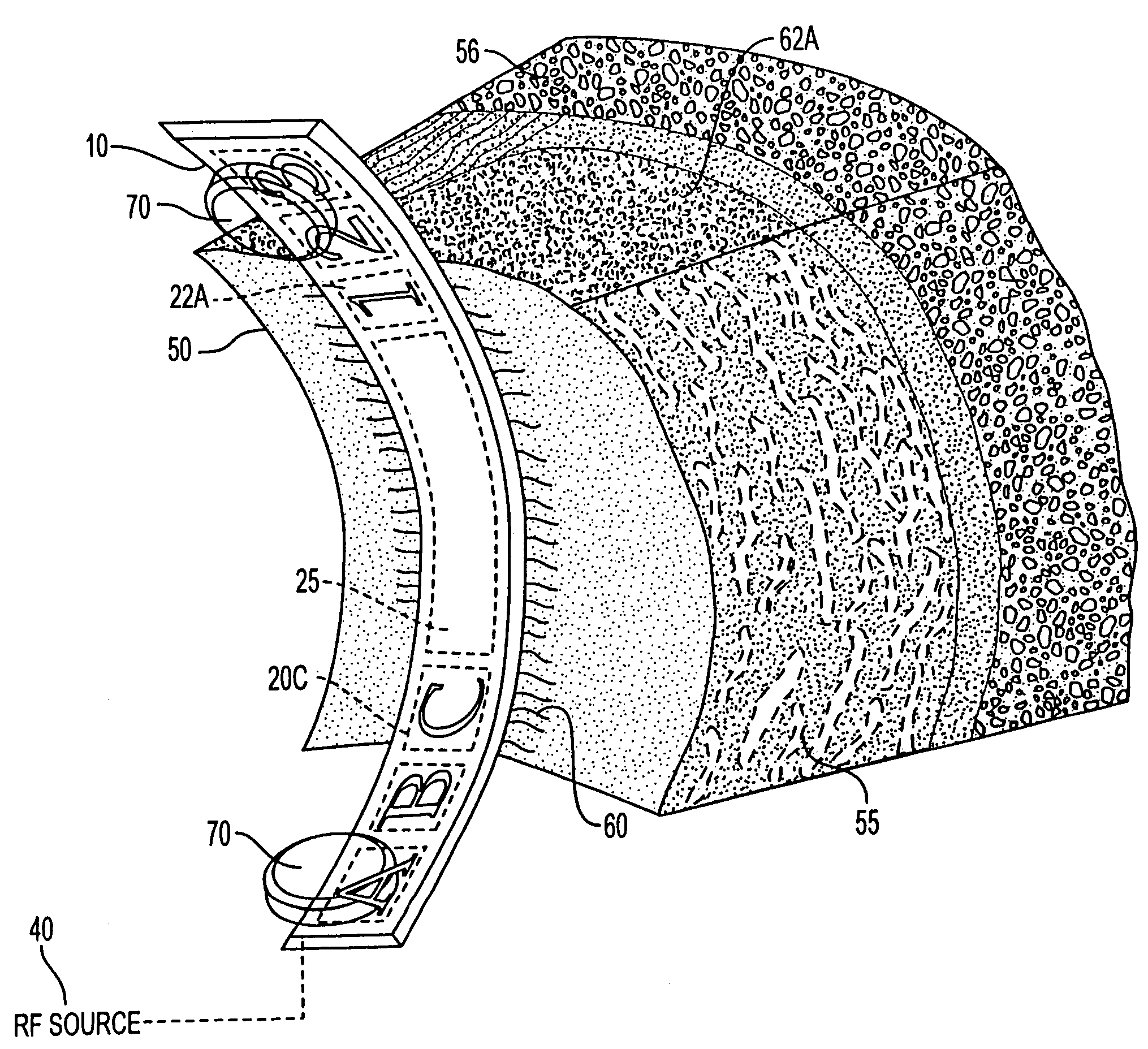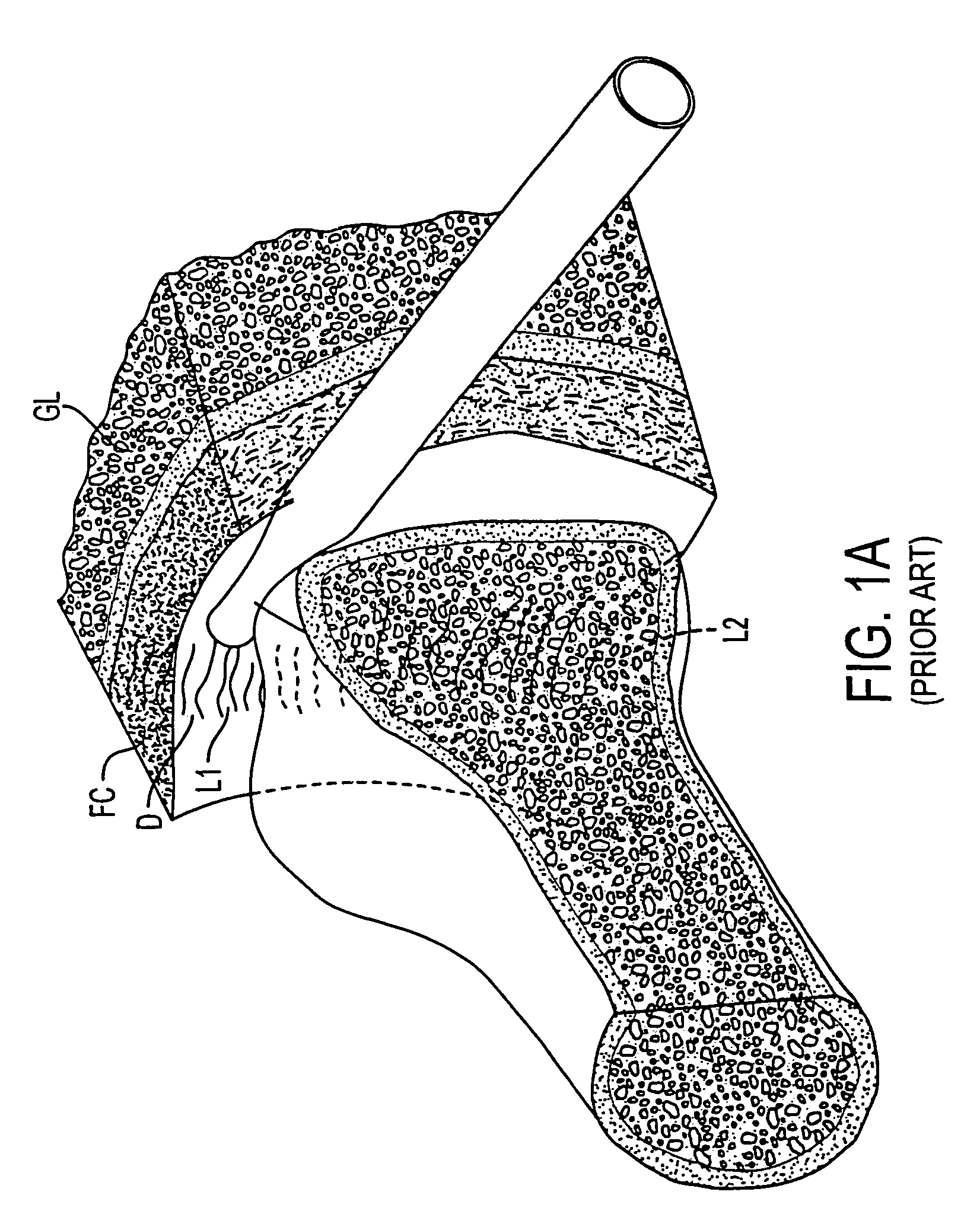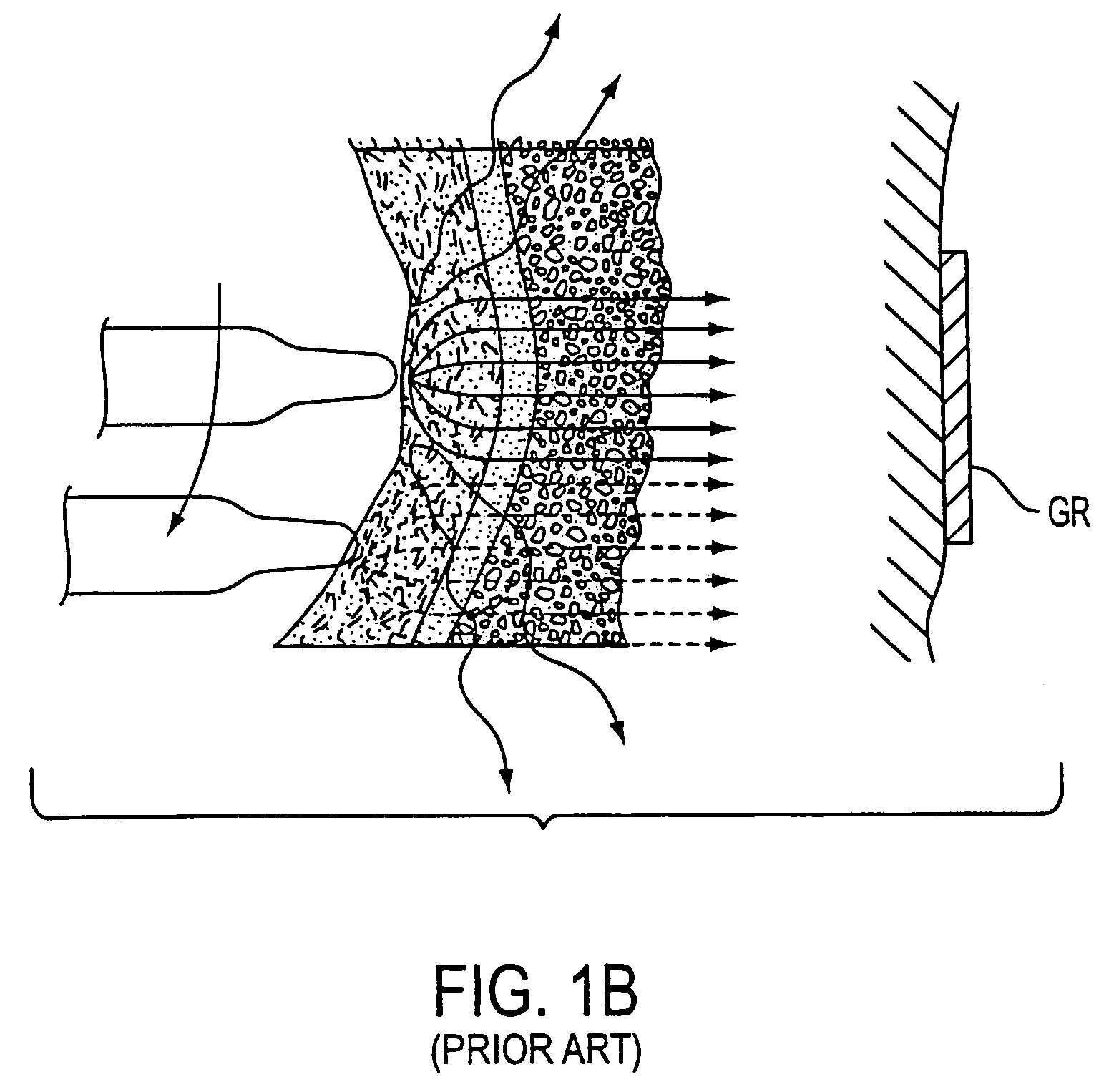RF electrode array for low-rate collagen shrinkage in capsular shift procedures and methods of use
a technology of rf electrode array and capular shift, which is applied in the field of rf (radiofrequency) devices and methods, can solve the problems of unidirectional type, joint instability, joint instability, etc., and achieve the effect of preventing surface ablation and low rf power levels
- Summary
- Abstract
- Description
- Claims
- Application Information
AI Technical Summary
Benefits of technology
Problems solved by technology
Method used
Image
Examples
Embodiment Construction
[0036]The present invention provides apparatus and methods for performing capsular shift procedures, and other similar procedures, using low levels of directed RF power (e.g., between about 0.5 watts to 25.0 watts) to remodel collagen at low shrinkage rates, i.e., where collagenous ligament tissue is elevated to shrinkage temperatures slowly to achieve uniform shrinkage over a large tissue mass. In the preferred embodiment, high frequency alternating RF current (e.g., from 55,000 Hz to 540,000 Hz) is directed between paired bi-polar electrodes, and through a targeted collagenous tissue volume, by a non-energized “channeling electrode” interposed between the bi-polar electrodes.
[0037]Alternating RF current causes ionic perturbation and friction within the targeted tissue volume, elevating the tissue temperature as ions follow the changes in direction of the alternating current. Such ionic perturbation thus does not result from direct tissue contact with a resistive electrode that con...
PUM
 Login to View More
Login to View More Abstract
Description
Claims
Application Information
 Login to View More
Login to View More - R&D
- Intellectual Property
- Life Sciences
- Materials
- Tech Scout
- Unparalleled Data Quality
- Higher Quality Content
- 60% Fewer Hallucinations
Browse by: Latest US Patents, China's latest patents, Technical Efficacy Thesaurus, Application Domain, Technology Topic, Popular Technical Reports.
© 2025 PatSnap. All rights reserved.Legal|Privacy policy|Modern Slavery Act Transparency Statement|Sitemap|About US| Contact US: help@patsnap.com



